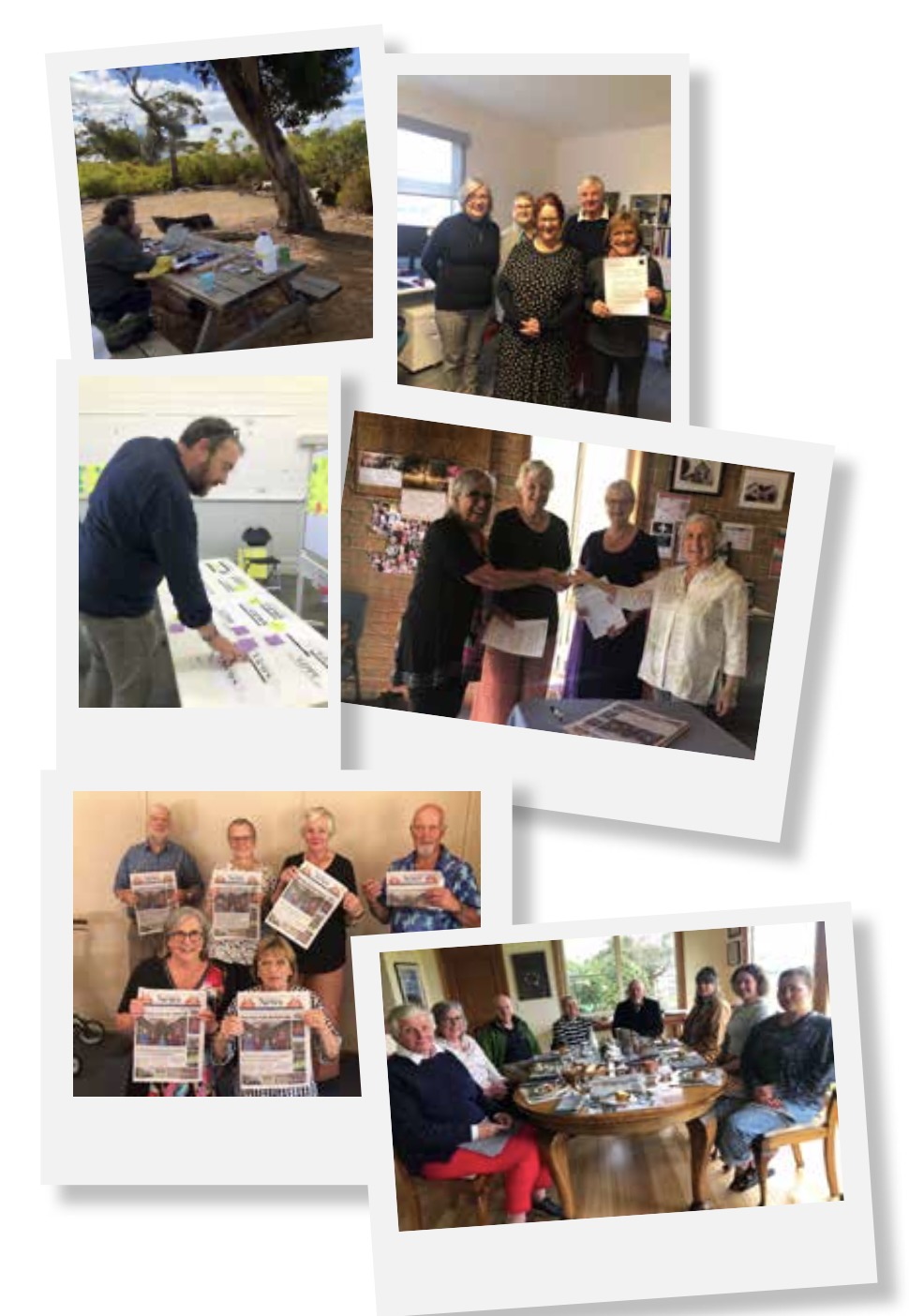When the Foster Mirror printed its final edition after 134 years of serving South Gippsland, the loss was keenly felt by passionate and connected locals.
Rather than stoically succumbing to the steady decline of local news, community members banded together to keep the flame alight.
Former South Gippsland Shire councillor Mohya Davies and retired farmer Kaye Rodden OAM led the charge, quickly organising a community gathering to discuss a way forward.
“Everybody in town was walking around going, ‘What are we going to do without the Mirror? How are we going to get local information?’” Davies tells PIJI.
“There was a sense of urgency to do something about it, but we were only a small community group with no real experience in journalism.”
Despite lacking industry experience, Davies and Rodden were determined to fill the void left by the Mirror’s absence after the Mirror’s owner was unable to find a buyer ahead of his retirement.
They found support from local Manna Gum Community House, which auspiced their working group.
Soon, Davies and Rodden found themselves the proud co-founders of local newspaper, Prom Coast News.
The first edition hit the stands in September 2024, about three months after the Mirror closed.
The feat would have been impossible without an inundation of local support, especially an initial wave of financial contributions; one offering totalled $20,000, and another $10,000 was contributed directly from a community member’s superannuation.
Rodden says locals were “devastated” at the prospect of being left with no voice, so were eager to support the venture.
“The community had always had a local newspaper, and so we thought it was really important that they continued to have a paper that talked about their local issues,” she says.
“A lot of the information that the community are bombarded with is social media-based, and it’s just so reactive and so inaccurate … and it’s really worrying that people are basing their decisions and their commentary on something that’s not true.
“So I think it’s really important that we have really good quality, well-researched information that the community can use if they want to.”
Fuelled by locals
Now just over a year old, Prom Coast News has evolved from a monthly physical paper to a fortnightly paper and digital offering.
The publication is truly for the community, by the community.
It is produced by just four paid contractors and an array of local volunteers that offer stories, photos and assistance with advertising, finance and distribution.
Prom Coast News now boasts 300 paid digital subscribers and a distribution range of 1200 newspapers across several regional townships including Sandy Point, Buffalo and Venus Bay.

But many hurdles were jumped to get to this point – and more lie ahead.
“Trying to make it sustainable is the real challenge,” Davies says.
“There’s a lot of luck and hard work in keeping it going, but our passion for local news has driven us.”
Chasing a sustainable future
Prom Coast News became a not-for-profit incorporated association, and a Foundation for Rural Regional Renewal grant enabled the newspaper to set up a website.
As with most news publications, advertising is a much sought-after revenue source.
Davies says they were lucky to receive the “generous” support of local businesses who had previously advertised in the Mirror.
Prom Coast News also spent a lot of time in hot pursuit of government advertising.
In Victoria, state government policy mandates at least 15 per cent of department and agency campaign advertising must be spent on regional and rural media. And in 2022, then-Premier Daniel Andrews committed to weekly one-page paid government advertising in eligible regional publications.
But new publications must publish fortnightly for six months before being eligible for the weekly ads, which Rodden says made the formative stages of Prom Coast News “extraordinarily difficult”.
The newspaper became eligible for the weekly ads in September, but she says the newspaper’s situation is still “hand to mouth”.
Little input in government measures
Prom Coast News is associated with three groups Rodden says are advocating for local and regional newspapers to be included in government decision-making on measures aimed at providing relief to news publishers: Victorian Country Press Association, the Community Newspaper Association of Victoria and the Local and Independent News Association.
But she says compared to large media organisations with bigger platforms that are discussing issues with the federal government, small publications are not having any impact.
“In my experience, it’s pretty tough for small, independent newspapers,” Rodden says.
“I’m really grateful that we managed to survive 12 months, that we’re still going and the community have given us a go.”
The pressures on the journalism sector are heavy.
Increasing domination of clicks, content and advertising by social media and tech giants contribute to much of the hardship.
PIJI found 183 news outlets succumbed to the pressure and closed in the five years to September 2024.
For a few years, there was some reprieve due to Meta and Google entering commercial agreements with Australian news publishers to avoid being designated under the News Media Bargaining Code.
After Meta abruptly cut the cord last year, the Australian government proposed the News Media Assistance Program and the News Bargaining Incentive to help ease the enhanced burden on news publishers.
But no public progress has been made to finalise and implement these measures.
Written by Sezen Bakan